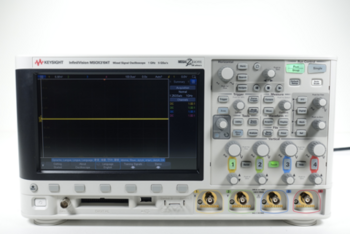- Introduction
- Voltage Drop Explained
- The Physics Behind Voltage Drop
- Significance of Voltage Drop in Electrical Engineering
- Calculating Voltage Drop
- Common Testing and Measurement Tools
- Mitigating Voltage Drop
- Impact of Temperature on Voltage Drop
- Voltage Drop in Series and Parallel Circuits
- Series Circuits
- Parallel Circuits
- The Role of Voltage Drop in Circuit Analysis
- Conclusion
- Whenever You’re Ready, Here Are 5 Ways We Can Help You
Picture this: You've designed a state-of-the-art circuit. All components are top-of-the-line, every connection is meticulously soldered, and the design is polished to perfection. You power it up, only to face disappointment. The circuit malfunctions. After relentless troubleshooting, you find the culprit – voltage drop.
Voltage drop may seem unassuming, but in the world of electrical engineering, it's what keeps systems functioning smoothly and efficiently. It's the difference between a smoothly operating device and a circuitry failure. Whether you're designing intricate electrical systems, performing power grid analysis, or tinkering with a DIY electronics project, understanding voltage drop is essential.
This concept impacts every electrical system, from the smallest microprocessor to the colossal power grid systems that electrify our world. Let's dive into the world of voltage drop, understand its concepts, and its profound impact on the realm of electrical engineering.
Buy Oscilloscopes at a Great Discount
Voltage Drop Explained
Voltage drop refers to the reduction in electrical potential along the path of a current flowing in an electrical circuit. This happens due to the resistance, inductance, and capacitance that exist within the electrical conductors. When current flows through these components, a certain amount of energy is lost in the form of heat, leading to a decrease in voltage.
The Physics Behind Voltage Drop
It all begins with Ohm's law, a fundamental principle in the realm of electronics. This law states that the voltage (V) across a conductor is directly proportional to the current (I) flowing through it, with the proportionality constant being the resistance (R). In other words: V = I * R
As current traverses through an electrical component or a conductor, it has to overcome the inherent resistance, which causes a loss of electrical energy, resulting in a voltage drop.
| Key Takeaway |
|---|
| Understanding and managing voltage drop is essential for designing efficient, reliable, and safe electrical systems, from microcircuits to large-scale power grids. |
Significance of Voltage Drop in Electrical Engineering
- Efficiency: In power distribution systems, excessive voltage drop can lead to energy wastage and reduced efficiency. Understanding and managing voltage drop is crucial to ensure the system's energy efficiency.
- Device operation: Voltage drop is an important consideration in electronics design. Insufficient voltage can cause devices to malfunction or fail to operate. This is particularly relevant in devices with microprocessors, where voltage levels determine functionality.
- Safety: A higher voltage drop may result in increased current to compensate for the lost voltage, leading to overheated wires and potential fire hazards. Hence, minimizing voltage drop helps ensure safety.
Calculating Voltage Drop
The calculation of voltage drop is a straightforward process. Using Ohm's law, you can determine the voltage drop across a resistor or a series of resistors by multiplying the resistance value by the current flowing through it.
When dealing with AC circuits, the calculation becomes slightly more complex due to the introduction of reactive components like inductors and capacitors. The equivalent concept here is impedance (Z), which includes both resistance and reactance. The formula to calculate voltage drop in an AC circuit is: V = I * Z
Common Testing and Measurement Tools
- Multimeter: This is an essential tool for measuring voltage drop. By placing the multimeter probes across the component or segment of the circuit, the voltage drop can be directly read from the display.
- Oscilloscope: An oscilloscope allows you to visualize the voltage drop over time, which can be invaluable for diagnosing intermittent problems or analyzing waveform quality.
- Clamp Meter: This is a handy tool for measuring the current flowing through a conductor without breaking the circuit. By measuring the current and knowing the resistance, voltage drop can be calculated.
| Tool | Voltage Measurement | Current Measurement | Time-varying Signal Analysis |
| Multimeter | Yes | Yes | No |
| Oscilloscope | Yes | Yes (with clamp or current probe) | Yes |
| Clamp Meter | No | Yes | No |

Mitigating Voltage Drop
Voltage drop, while a natural occurrence in any electrical system, can cause inefficiencies or malfunctions if not appropriately managed. Several strategies can be employed to mitigate this:
- Increasing conductor diameter size: Larger conductors have less resistance, reducing the voltage drop for a given length and current.
- Decreasing the load current: Lower current means less voltage drop over a particular resistance.
- Reducing the length of the conductor: The shorter the path of the current, the less resistance it encounters, leading to a lower voltage drop.
Impact of Temperature on Voltage Drop
Temperature significantly influences the voltage drop in a circuit by affecting the resistance of its components. This relationship is governed by a property known as the 'temperature coefficient of resistance', which indicates how the resistance of a material changes with temperature.
For most conductors, such as copper, resistance increases as temperature rises. As per Ohm's law (V=I*R), an increase in resistance with a constant current results in a higher voltage drop.
For example, consider a circuit with a copper wire. If the ambient temperature rises while the current remains the same, the copper wire's resistance increases. This heightened resistance leads to a larger voltage drop across the wire, potentially causing the circuit to receive less voltage than intended, which could result in decreased efficiency or even failure.
Hence, when designing circuits, it's crucial to account for temperature changes and select materials with appropriate temperature coefficients of resistance to maintain circuit performance.
Voltage Drop in Series and Parallel Circuits
Understanding voltage drop in different circuit configurations, namely series and parallel, is essential for effective circuit design and analysis. The behavior of voltage drop varies markedly between series and parallel arrangements.
Series Circuits
In a series circuit, components are connected end-to-end in a single path for the electric current. The total voltage supplied by the source is divided among the components depending on their resistance (or impedance in AC circuits). This is in line with Kirchhoff’s Voltage Law (KVL), which states that the sum of the potential differences (voltages) around any closed loop or mesh in a network is equal to zero.
So, if you have three resistors (R1, R2, and R3) connected in series with a power source supplying voltage (V), the voltage drops across the resistors (V1, V2, and V3) will add up to the total supplied voltage. That is:
V = V1 + V2 + V3
The voltage drop across each resistor can be calculated using Ohm’s law (V = I * R), where I is the current (same throughout in a series circuit) and R is the resistance of the resistor.
Parallel Circuits
In a parallel circuit, components are arranged side by side, forming separate paths for the current. Unlike a series circuit, the voltage drop across each parallel branch is the same and equals the source voltage. This is because each branch forms a direct path from the voltage source, hence each component experiences the full source voltage.
Taking the same three resistors (R1, R2, and R3) but this time arranged in parallel with the same power source providing voltage (V), the voltage across each resistor would be the same and equal to the supplied voltage, that is:
V = V1 = V2 = V3
Understanding these principles is vital in both circuit design and troubleshooting, as it enables engineers to predict the behavior of complex electrical networks and design circuits for specific voltage requirements.

The Role of Voltage Drop in Circuit Analysis
Voltage drop is a critical factor in various circuit analysis methods:
- Nodal Analysis: In this method, we define a system of equations based on Kirchhoff's Current Law (KCL). These equations require voltage drop calculations to solve for unknown node voltages.
- Mesh Analysis: Based on Kirchhoff's Voltage Law (KVL), this method forms a system of equations where the sum of voltage gains and drops in a loop equals zero.
- Thevenin’s Theorem: This theorem allows a complex network to be replaced by a single voltage source and a series resistance. Determining the Thevenin equivalent circuit involves calculating the voltage drop.
Conclusion
Voltage drop is fundamental in the realm of electrical engineering. Its influence spans from the basic Ohm's Law to advanced circuit analysis techniques, affecting every component, connection, and device in an electrical system. Temperature fluctuations, circuit configurations, and material properties all play a role in dictating the magnitude of voltage drop.
Understanding and managing voltage drop is paramount to designing efficient and reliable systems. Equipped with this knowledge, you can anticipate, diagnose, and mitigate issues in your electrical designs, transforming potential problems into successful projects.
Understanding voltage drop is a key part of circuit design, but it's only part of the picture. To truly excel, you need to bridge theory with practice—and that's where Keysight's Used Equipment Store can help.
Discover a range of rigorously tested and calibrated instruments, from advanced oscilloscopes to precision multimeters, all tailored to help you effectively analyze and validate your designs. No matter the complexity of your projects, Keysight provides the tools to ensure your success.

Browse Oscilloscopes at a Great Discount
Whenever You’re Ready, Here Are 5 Ways We Can Help You
- Browse our Premium Used Oscilloscopes.
- Call tech support US: +1 800 829-4444
Press #, then 2. Hours: 7 am – 5 pm MT, Mon– Fri - Talk to our sales support team by clicking the icon (bottom right corner) on every offer page
- Create an account to get price alerts and access to exclusive waitlists
- Talk to your account manager about your specific needs

































































































